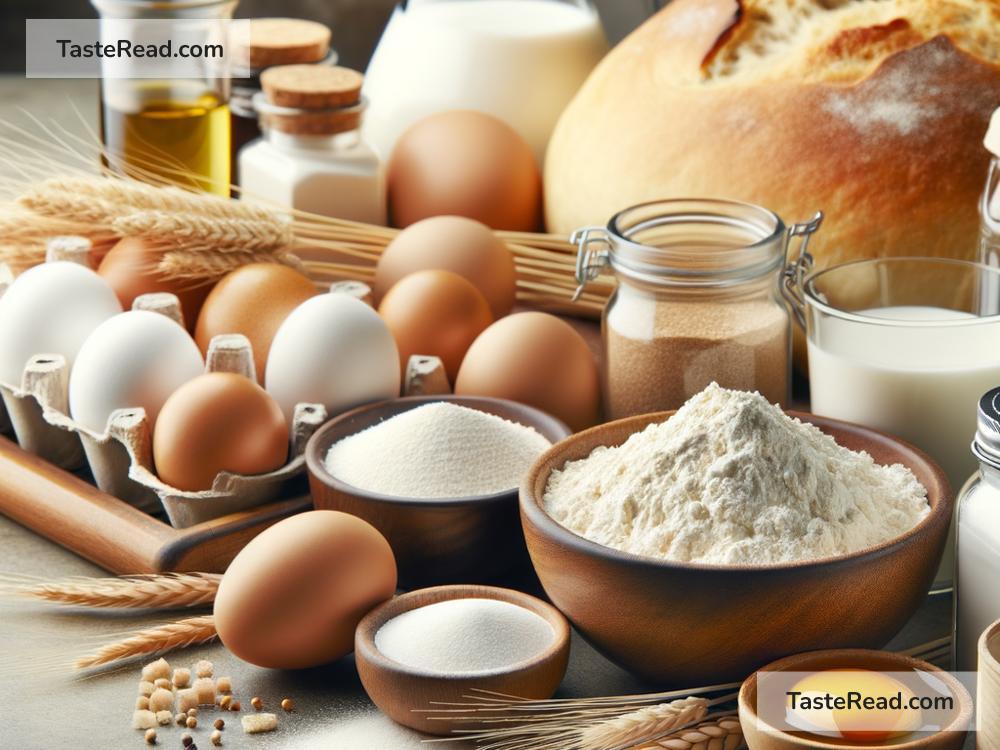The Chemistry Behind Baking: Leavening Agents
Baking is like a magical science experiment that happens in your kitchen. While it might look simple—mixing ingredients, putting them in the oven, and watching them turn into delicious bread, cakes, or cookies—there’s some fascinating chemistry going on behind the scenes. The star of this magical transformation? Leavening agents!
Leavening agents are the ingredients that make your baked goods rise, giving them lightness and fluffiness instead of being dense or heavy. In this blog, we’ll explore what leavening agents are, how they work, and why they’re crucial in baking.
What Are Leavening Agents?
Leavening agents are substances that cause doughs and batters to expand by producing gas bubbles. These gases get trapped inside the mixture, creating tiny pockets of air. When the mixture bakes, those bubbles solidify, making your cakes, muffins, or breads rise and become light and soft.
There are three main types of leavening agents: chemical leavening agents (like baking soda and baking powder), biological leavening agents (like yeast), and mechanical leavening methods (like beating air or steam into a batter). Let’s look at each one in more detail.
Chemical Leavening Agents: Baking Soda and Baking Powder
Chemical leavening agents rely on a reaction to produce carbon dioxide gas, which helps the batter rise.
Baking Soda
Baking soda is a base, meaning it’s an alkaline substance. When you mix baking soda with an acid (like lemon juice, vinegar, buttermilk, or yogurt), it creates a chemical reaction, releasing carbon dioxide gas. This gas forms bubbles in your batter, which will expand and lift your baked goods as they bake.
For example:
1. Imagine adding baking soda to a pancake batter made with buttermilk (an acidic ingredient).
2. The baking soda reacts with the buttermilk, producing tiny bubbles of carbon dioxide.
3. When you cook the pancakes, those bubbles expand and create a fluffy texture.
It’s important to note that baking soda works quickly. You usually need to bake the batter right away after mixing to take full advantage of the gas released.
Baking Powder
Baking powder is slightly different. It’s a mix of baking soda, an acid (usually cream of tartar), and a filler (like cornstarch) to keep it dry. The great thing about baking powder is that it doesn’t need additional acid; the acid it needs is already included in the mixture. There are two types of baking powder:
1. Single-acting baking powder: Reacts immediately when mixed with liquid.
2. Double-acting baking powder: Reacts in two phases—first when mixed with liquid and then again when heated during baking.
Most store-bought baking powders are double-acting, so they give you a little extra lift while your baked goods are in the oven.
Biological Leavening Agents: Yeast
Yeast is a living microorganism that plays a huge role in baking, especially for bread. It’s like a tiny baker working inside your dough to create air bubbles. Here’s how it works:
- When yeast is added to dough along with sugar and warm liquid, it begins to “feed” on the sugar. This process is called fermentation.
- During fermentation, yeast produces carbon dioxide gas and alcohol. The carbon dioxide creates bubbles that cause the dough to rise.
- When the dough is baked, the heat kills the yeast, and the trapped bubbles set, giving bread its airy texture.
Unlike baking soda or baking powder, which work quickly, yeast requires time to work its magic. That’s why bread recipes often include steps for letting the dough rise, sometimes for several hours.
Mechanical Leavening Methods: Air and Steam
Not all leavening depends on chemicals or microorganisms—sometimes, bakers use mechanical methods to create air bubbles in the batter.
Whipping Air Into a Batter
For example, when you beat eggs or cream vigorously with a whisk or mixer, you trap tiny air bubbles. That’s why recipes for sponge cakes or meringues often call for whipping ingredients to “stiff peaks.”
Steam As a Leavening Agent
Steam can also act as a leavening agent. As water in the batter turns into steam in the oven, it expands, pushing the batter upward. This technique is key for recipes like puff pastry or choux pastry (used in cream puffs).
Why Are Leavening Agents Important?
Without leavening agents, baked goods would be dense bricks instead of soft, airy treats. Imagine biting into bread that feels like a thick, solid chunk instead of having a fluffy crumb, or eating cookies that don’t have any lift. Leavening agents are what make baking exciting—they add texture, volume, and flavor to your creations.
Tips for Success With Leavening Agents
Here are some tips to ensure your leavening agents work effectively:
1. Measure Properly: Too much or too little can throw off the chemistry. Follow recipes carefully!
2. Don’t Wait Too Long: Baking soda reacts quickly, so get your batter into the oven right away.
3. Use Fresh Ingredients: Old baking soda or baking powder might not work as well. Check expiration dates!
4. Create the Right Environment for Yeast: Yeast loves warmth, but too much heat can kill it. Keep liquids at lukewarm temperature (around 100°F or 38°C).
Conclusion
Leavening agents are the unsung heroes of baking. Whether it’s baking soda creating a quick fizz, yeast steadily fermenting over time, or steam rising dramatically in the oven, these ingredients bring your baked goods to life. The next time you bake, take a moment to appreciate the science happening in your mixing bowl—it’s chemistry with a delicious reward!
Happy baking!


